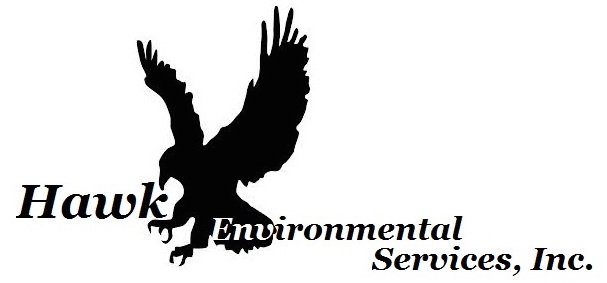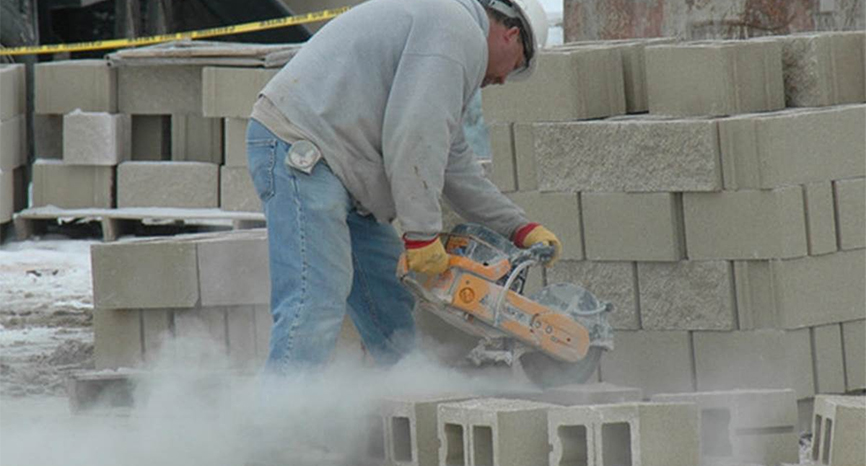What is silica dust and where does it come from?
Crystalline silica is a natural mineral that is found in rock and sand. While this material is widely prevalent throughout the world, and generally thought of as inert, when crystalline silica becomes and airborne dust the inhalation hazards are severe. For exposure to occur the particles must be fine enough to pass beyond our nose hairs and mucous membranes, the term for these sized particles is respirable crystalline silica. Respirable particles are extremely small and may not be readily visible by the human eye, additionally most standard vacuums and filters will not be able to remove the fine particles that pass into our lungs. To adequately remove crystalline silica dust from the air, a HEPA filter is necessary.
How does silica dust affect your health?
The risk of lung disease and cancers associated with asbestos and cigarette smoke are well-known, but until recently the was very little awareness of the diseases that can be caused by breathing in silica dust. The main disease associated with respirable silica inhalation is silicosis, but silica exposure is also known to cause lung cancer, chronic obstructive pulmonary disorder (COPD), and kidney disease. In the United States more than 2 million people are exposed to silica during the normal work practices.
What laws govern workplace exposure to crystalline silica dust?
By the end of 2019, everyone in the construction industry should be aware of OSHA’s new rule titled “1926.1153 Respirable crystalline silica”. This rule applies to all worker’s in the construction industry that may be exposed to 25 micrograms per cubic meter of crystalline silica during the course of their work. While source control practices that include HEPA filtered tools, wet cutting, and plastic sheeting are often recommended; removing crystalline silica dust from the ambient air using and air filter should be standard practice.
What type of work can create silica dust?
Any work that involves the cutting, sanding, grinding, or abrading of concrete, granite, brick, mortar, sand, ceramic, or other stone can cause high levels of silica dust to be aerosolized. This can also occur in the manufacturing industry, during paint or coating applications, as a by-product of jewelry or dental implant production, at oil and gas facilities, mines, and transportation operations. The larger production and manufacturing facilities will typically have large HEPA filtration systems installed as part of their assembly or production work space, but air filtration is often overlooked when jobs are performed at the client’s site or job-sites that would be considered “in the field”.
Which industry is at greatest risk for silica exposure liabilities?
While the risk of actual exposure may be highest for individual employee’s that work in heavy industry, these worker’s generally have better training and safety infrastructure to protect them from the hazards of silica dust. We find that smaller companies and job-sites are exposed to a higher liability risk due to the fact that the jobs may only last a few days and may not be large enough to warrant dedicated safety staff. Contractors that perform small to medium sized concrete cutting or resurfacing jobs, minor to moderate demolition, or even standard residential renovation projects also need a plan to protect employees and other occupants from silica dust exposure. The best way to provide that protection is through the use of air scrubbers that are equipped with HEPA filtration.
What kind of filters can remove silica dust?
As we learned above, the dangerous portion of silica dust is the fine particles that can pass into the respiratory system. Source control of the dust at the tool is important, but only a true HEPA air filter can remove the remainder of fine silica particles from the air. These units are also used in the asbestos abatement and mold remediation industry, so you can be assured that there is a long history of using HEPA filtration to remove harmful dust from the environment.
Which HEPA filter is best for removing silica dust from a work site?
When choosing an air scrubber to use for silica dust removal, the first thing to consider is the filter rating. A unit that has an official HEPA rating is mandatory. Next you should consider the best balance between the size of the unit (how portable is the filter) and the amount of air that it moves (Cubic Feet Per Minute). Finally, assessing the possible functions are the last step to help choose the right HEPA air scrubber. These units can have features such as variable speed, replaceable pre-filters, extra GFCI outlets, and the ability to accept both intake and exhaust ducting. A high-quality unit will also have the ability to accept activated carbon canisters that, while not effective for silica, can remove fumes, vapors, odors, and gases.
Which HEPA filter is the best for silica dust?
The Hawk Environmental MultiPro Air Scrubber is hands-down the best choice for removing crystalline silica dust from the air at your jobsite. The MultiPro uses a cylindrical HEPA filter that has more surface area than square units and seals perfectly with an O-ring. This unit can filter 800 cubic feet per minute of job site air in a compact and portable format. The variable speed knob on the MultiPro allows users to dial-in the right amount of airflow for the size of the space. Easy connections on both the intake and exhaust side of the filter allow you to connect ducting that can be used to create a negative pressure environment or draw in the silica dust from across the work site.
Comments are closed.

